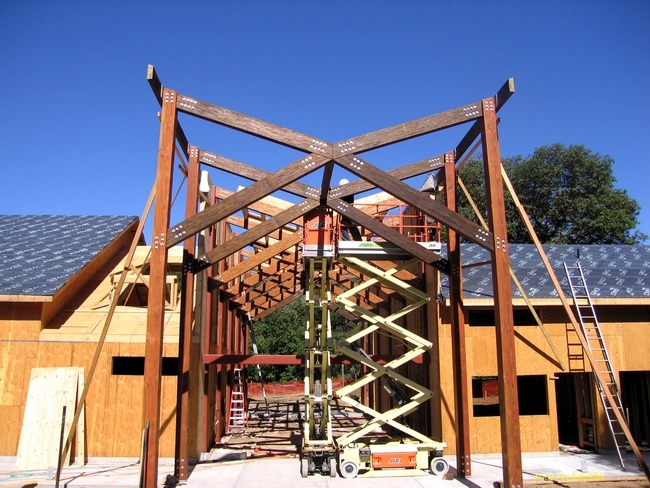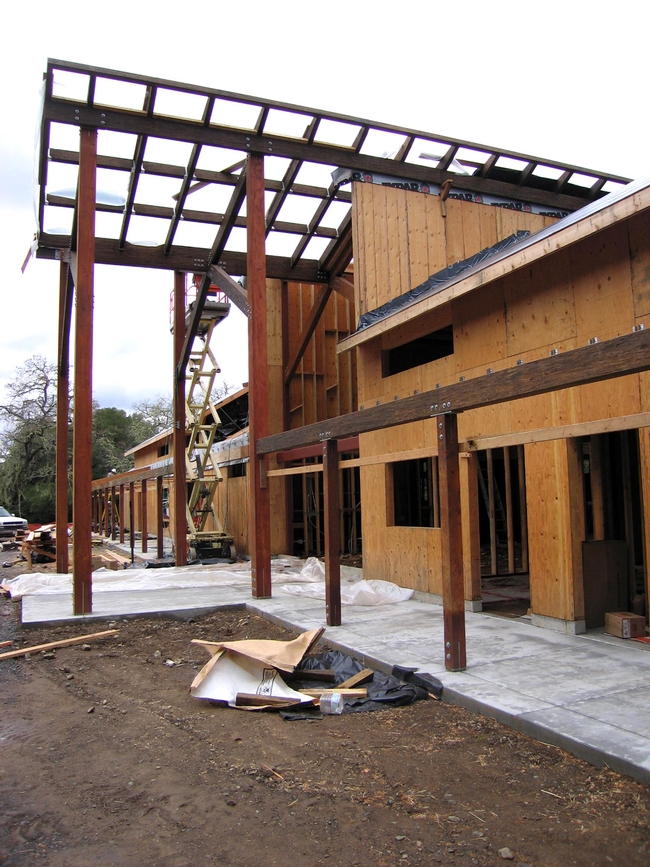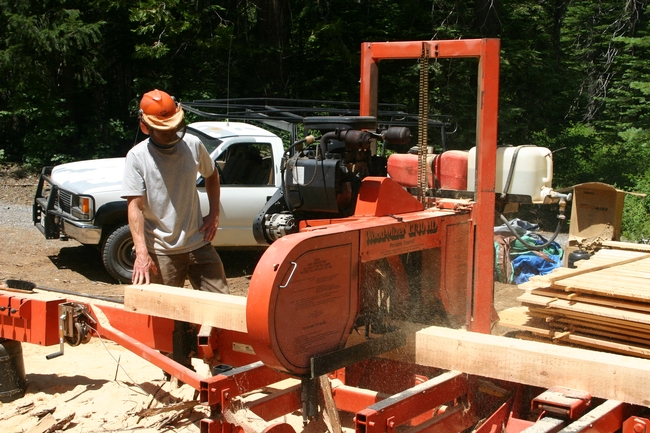
Posts Tagged: Sustainable Natural Ecosystems
UCANR Seeks Public Comment on Proposed Livestock, Forestry and Natural Resources CE Positions By July 21, 2014
The University of California Agriculture and Natural Resources created a call in January of 2014 for new UCCE Advisor and Specialist positions. The goal for filling these positions is to strengthen and rebuild the UC ANR network to meet programmatic gaps and emerging issues facing California identified in the Strategic Vision (see: ANR Strategic Vision 2025 full report or ANR Strategic Vision 2025 Executive Summary) and further refined in each of the 5 Strategic Initiatives entitled: Endemic and Invasive Pests and Diseases, Healthy Families and Communities, Sustainable Food Systems, Sustainable Natural Ecosystems and Water Quality, Quantity and Security. All 123 new proposed positions are listed on a public web page at this link.
These proposed positions are presently undergoing internal review until August 18, 2014. The public is invited to comment on these proposed positions until July 21, 2014.
Of the 123 positions proposed, 23 positions could benefit California's livestock, forestry and natural resources based industries. Those same 23 positions would have overlapping impact on both sustainable natural ecosystems, water quality, quantity security and sustainable food systems. I have listed in the table below those 23 positions with their identifying number, title, type of position (Advisor or Specialist) and where those positions would be located. Area Advisors are housed in one county but cover multiple counties. Specialists are statewide and support Advisor research and educational programs. If you click on the ID Number it will take you to the page where you can add comments for that position. There is also a link on that same page that describes the position in more detail.
|
ID Number |
Position Title |
Advisor or Specialist |
Location, County or Campus |
|
Area Livestock & Natural Resources |
Advisor |
Tuolumne |
|
|
Area Desert Livestock |
Advisor |
Imperial |
|
|
Area Forest & Natural Resources |
Advisor |
Ventura |
|
|
Area Forest & Natural Resources |
Advisor |
Sutter-Yuba |
|
|
Area Livestock & Natural Resources |
Advisor |
Placer-Nevada |
|
|
Area Livestock & Natural Resources |
Advisor |
Sutter-Yuba |
|
|
Area Livestock & Natural Resources & Community Development |
Advisor |
Plumas |
|
|
Area Livestock & Natural Resources |
Advisor |
Ventura |
|
|
Area Natural Resources – Fire & Restoration |
Advisor |
San Diego |
|
|
Dairy |
Advisor |
Sonoma |
|
|
Dairy |
Advisor |
Humboldt |
|
|
Livestock & Natural Resources |
Advisor |
Siskiyou |
|
|
Applied Limnology (Lakes & Fresh Water) |
Specialist |
UCD |
|
|
Aquaculture |
Specialist |
UCD |
|
|
Beef Cattle Herd Health |
Specialist |
UCD Vet Med |
|
|
Dairy Cattle Production Health Management |
Specialist |
Vet Med Teaching & Research Center -Tulare |
|
|
Forest Products and Woody Biomass |
Specialist |
UCB |
|
|
Livestock & Rangeland Economist |
Specialist |
UCD |
|
|
Plant Conservation |
Specialist |
UCR |
|
|
Rangeland Management |
Specialist |
UCD |
|
|
Rangeland Policy & Planning |
Specialist |
UCB |
|
|
Rangeland Ruminant Nutritional Ecology |
Specialist |
SFREC Sierra Foothill Research & Extension Center |
|
|
Sheep & Goat Heard Health & Production |
Specialist |
UCD Vet Med |
It is very possible that not all of these positions will survive the screening process. That's why it's important to have stakeholder input and I urge you to take the time to review at least each of these and comment. Please also comment on any of the other positions shown on the full list as well.
It's also important to know that the comment process is not a voting one. Rather it is a supportive process from stakeholders who are visionary and statewide-thinking about the issues facing California's livestock and natural resources owners, managers and stewards. Some of these positions, especially the Advisors and a few of the Specialists, have had very successful people filling those slots. The public comments should not focus on replacing one of these great people but local, regional and statewide need for the position to work to solve current and future problems.
As the statewide leader for the Sustainable Natural Ecosystems Initiative, I would also like to hear from my blog readers how you might rank the positions in the above table outside of the comments you provide on the public page links I've provided in the table. To do so just either comment on this blog article, message me via LinkedIn or Facebook or drop me an email at jmharper@ucanr.edu. Please put SNESI positions in the subject so I can search and sort. I look forward to hearing from you!
New Hopland building integrates nature with function

The new Rod Shippey Educational Facility and Field Laboratory at the UC Hopland Research and Extension Center is currently under construction, scheduled for completion in June. The facility is being constructed to meet standards equivalent to Leadership in Energy and Environmental Design (LEED) certification, per University of California requirements of new buildings.
“We want this building to be educational itself,” said Bob Keiffer, superintendent of the UC Hopland Research and Extension Center. “We are trying every which way possible to incorporate ‘green aspects’ into this building.”
As early as October the building will welcome visitors to learn about natural resources, agriculture and science. It is expected to comfortably seat 180 to 200 people.
“We envision this building as being used by the entire community of the North Coast. There’s no other large meeting facility of this kind in Mendocino County that we know of and that will have this connection to the outdoors,” Keiffer said.

Community members are also contributing to the project. Six 27-foot tall reclaimed Douglas fir posts will greet visitors at the entry of the Rod Shippey Facility, a feature made possible in part to a donation by North Cal Wood Products, a Ukiah company that specializes in reclaimed and recycled wood. These posts, with 13 smaller timbers along the breezeway, have been reclaimed from the Pacific Lumber Company mill in Scotia, once the largest redwood mill ever constructed.
“We went out to the yard and saw them slice open the first timber,” said Shawn Tibor, director of facilities for UC Agriculture and Natural Resources. “With the timbers being 100 years old from another structure, we had to decide on-site where to position each post’s face. They have character, let’s put it that way. But all of them are standing now and have been stained.”
The Penofin wood stain was donated by another Ukiah company, Performance Coatings.

Woodpeckers welcome
“We have one of the densest populations of acorn woodpeckers anywhere in the state. The woodpeckers form granaries where they store acorns, sometimes in trees — and sometimes in buildings,” Keiffer said. “They can actually be quite destructive, with a series of half-inch holes all over the place.”
Impervious siding seemed like a requirement for the new building, until designers praised the weathered characteristics of historic barns on the property.
“We really tried to design this building so that it ties people to the natural world,” Keiffer said. “We want a very close relationship between the building and what’s outside—and the acorn woodpecker is a major part of that.”
So the building materials actually encourage woodpeckers to make use of the building. Cedar siding, soft enough to welcome woodpeckers, was sourced from UC Berkeley’s Blodgett Forest Research Station and fitted to a waterproof membrane that will help further protect the building.
First UC building with siding from a UC-managed forest
No other University of California building has sourced wood directly from the Blodgett Forest before, according to Robert York, research stations manager with the Center for Forestry at UC Berkeley.
The Blodgett Forest in the Sierra Nevada near Georgetown in El Dorado County, is harvested each year in the context of the station’s research, usually with contractors harvesting the trees and commercial sawmills purchasing the logs. Tracking wood from a single forest through a commercial mill would be difficult, so instead logs for the Hopland facility’s 7,500 board-feet of 1-inch siding went to the station’s own small sawmill, which is more commonly used for educational demonstrations.
“It was actually me out there doing most of the milling of the siding,” York said.

“I think it does represent the kind of collaboration that we can have between research sites in California,” York said. “We're all trying to improve ways of managing and understanding natural resources. Whether it's a forest or a grassland, we all have this objective that's shared between us.”
Efficiency within a narrow budget
Plans for the building have evolved when it comes to funding, efficiency and green design. The building was originally slated for $1.7 million capital funding in the state’s 2007 budget, which was later frozen until January 2010. Private donations, including an anonymous $750,000 pledge, have helped make the building a reality.
Budget restrictions have meant cutting back on some of the more innovative systems that could further lower heating costs, reduce water needs and improve the building’s overall eco-friendliness. Passive heating, cooling and indoor-comfort measures have been implemented in the meantime, and construction has moved forward keeping as many other options open as possible. For example, the building’s restrooms are plumbed with separate grey-water and black-water pipes, which would make plans for on-site black-water treatment more feasible in the future.
“We’re situated so that if next year we get funded for something more integrative or progressive, the possibilities remain,” Tibor said. “There’s no limit to great, innovative ideas; it’s the budget that drives things.”
Get construction update and more details about green features at the facility's website http://ucanr.org/sites/Rod_Shippey_Facility.
